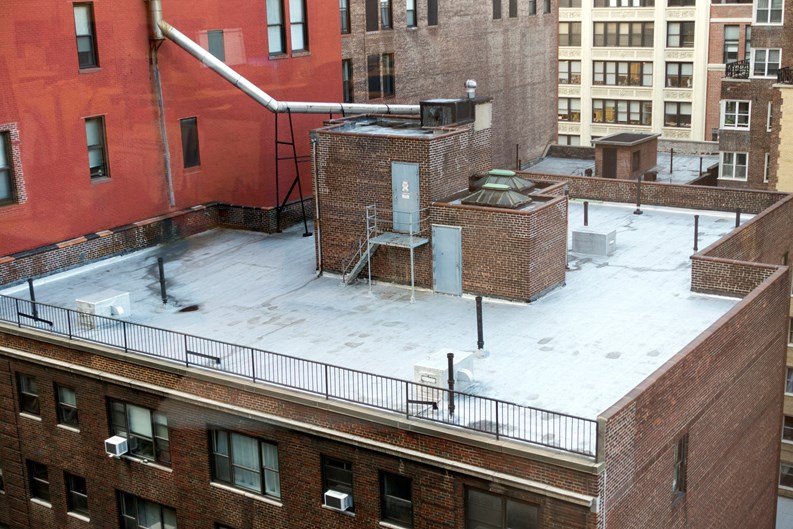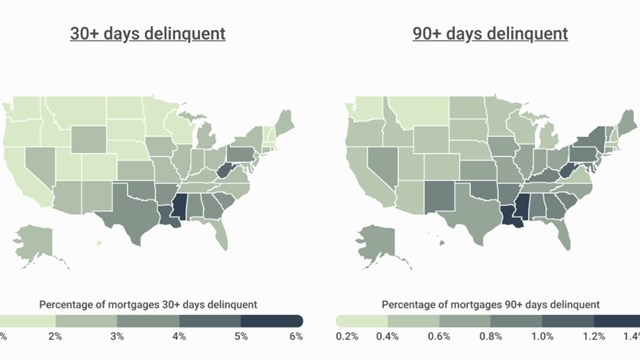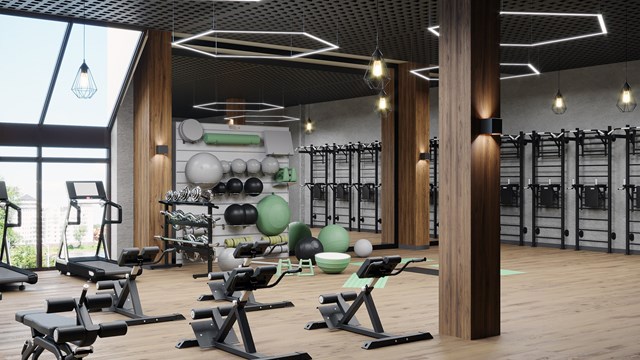For house-hunters in New York, outdoor space has always been a key amenity. While terraces, balconies and private gardens also top the list, larger outdoor spaces like roof decks and community gardens are perennially popular with both current and prospective residents -- and even more so lately, as the COVID-19 pandemic has made fully public spaces unappealing to many.
If you’re not among those lucky enough to already have a roof deck on their building, it might be worth considering installing one - depending on your structure, budget, and the value-add such an undertaking would represent. We spoke with a practicing architect to find out how feasible it is to add a roof deck to an existing condo or co-op building, as well as the administrative and safety concerns that go along with it.
What’s Necessary to Convert Your Roof?
Giulia Alimonti is an architect with DeSimone Consulting Engineers, a full-service national engineering firm headquartered in New York City with offices around the United States (www.de-simone.com). She is also a member of National Women in Roofing (NWiR) and Chair of that organization’s NYC Council. According to her, the basic requirements set by New York City to determine if your roof is suitable for a roof deck include the following: “First, there are structural requirements,” she says, “Because of the variety of roofs and structural decks supporting them, I recommend starting by evaluating and reviewing your roof’s structural composition; whether it is a concrete, metal, or wood deck, and its capacity to safely support both ‘live’ loads - such as human occupants - and ‘dead’ loads - such as the roof structure itself.”
Alimonti adds that retaining a qualified structural engineer as part of the design team as early as possible in the process will inform a lot of the decisions to be made down the road. For example, the structure of the roof deck will inform how many people will be allowed on the roof at any given time. Depending on the occupancy limit, the deck may qualify as a ‘place of assembly,’ and therefore may have to operate under the more stringent building code requirements that govern such spaces. This may include length of egress, stair widths, and bathroom facilities.
“It is important that all future occupants are able to safely access and exit the roof deck areas in normal times and during an emergency.” says Alimonti. “The occupants - residents of the building and their guests, maintenance staff and firefighters - will have to use the stairs. Building code requires two stairs to the roof, and the width of the stairs will also inform the number of occupants.”
An important third consideration is accessibility. The roof deck must be accessible to tenants and their guests who might not be able to simply walk up and down the stairs. “Accessibility by persons with disabilities is mandated by code,” stresses Alimonti. “This will almost always require that elevator access to the roof must be provided. Parapet heights and protection from wind must also be addressed, including minimum heights of no less than 42 inches, and additional requirements desired by the building ownership, such as a glass railings should be taken into account in evaluating the existing structure.”
Last but certainly not least, the design of a new roof deck should consider the view. Is there a preferred or desirable view that residents would enjoy? If you can build your deck wherever you want, but one side of the roof looks out onto a busy highway and the other a picturesque view of the skyline, that should definitely be one of the major design considerations. Also, sun orientation may inform the layout and type of roof shading to be installed, if any. “We live in a visually rich urban environment,” notes Alimonti, “and it’s nice to be able to capture the stimulation that comes from it, both during the day and at night.”
Working With Existing Features
“Every building has a different set of appurtenances and equipment on the roof that would need to be evaluated,” says Alimonti. “A typical high-rise residential building usually has a bulkhead with the stairwells and the elevator machine room, and possibly a water tank on top of the bulkhead. In some cases, pre-existing structural limitations may make it difficult to modify and extend one of the elevator shafts to provide access to the roof. This is where the design team performs an evaluation of the building layout to review possible solutions to allow access. These may include identifying an area on the top floor of the building directly below the roof, where it may be feasible to install a limited-use elevator separate from the building elevator that reaches the roof deck level.”
In the final analysis, says Alimonti, the structural capacity of the deck is the determinant factor in whether your particular building is a candidate for a rooftop social space. After a structural evaluation is completed, there may be strategies to reinforce the deck or re-distribute the loads by adding structural elements on the roof and integrate them with the new roof deck design.
Other Outdoor Alternatives
If a roof deck isn’t in the cards for your building, it may still be possible to create an outdoor shared space for residents. “Many buildings have backyards or setbacks that could be transformed into open space tenant amenities with great results,” says Alimonti, adding that most of the same general considerations would apply - specifically structural review and egress analysis. “I would recommend that the design team and the structural engineer perform a review of the existing conditions and provide an evaluation with possible options to the building,” she says.
Whether an outdoor common space is perched high above street level or tucked away between buildings, it’s likely a beloved feature for residents and an attractive draw for prospective buyers - and not just in these unusual circumstances. Building out a rooftop space requires a lot of commitment, both financial and administrative, but the rewards can be very real and lasting.
About Women in Roofing
National Women in Roofing (NWiR) is a volunteer-based national organization composed primarily of women in the roofing industry. They support and advance the careers of women roofing professionals, provide networking, mentoring, education and recruitment opportunities from the rooftop to the boardroom, for the young professional at the start of her career to the seasoned manager in the executive suite. Through their commitment to connect and empower women in roofing, they contribute to the overall betterment and professionalism of the roofing industry. You can find them at: https://nationalwomeninroofing.org/










Leave a Comment